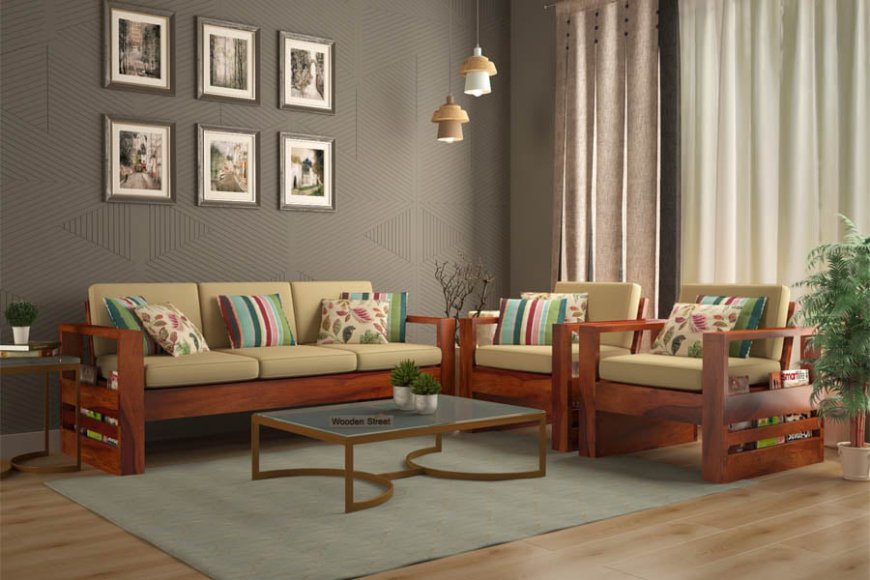Wooden Furniture: A Timeless Choice for Homes and Businesses

Wooden furniture has been a staple in homes and businesses for centuries, celebrated for its beauty, durability, and versatility. From intricate carvings to sleek, modern designs, wooden furniture adds warmth and character to any space. This article explores the various types, benefits, design considerations, and maintenance tips for wooden furniture, providing a comprehensive overview for homeowners and interior designers alike.
Types of Wooden Furniture
1. Solid Wood Furniture
Solid wood furniture is crafted from whole pieces of timber, offering unmatched durability and quality. Common types of solid wood include:
- Oak: Known for its strength and distinctive grain, oak is a popular choice for both traditional and contemporary furniture.
- Mahogany: This hardwood is prized for its rich color and fine finish, often used in high-end pieces.
- Maple: With a light, uniform grain, maple is favored for its resilience and versatility.
2. Engineered Wood Furniture
Engineered wood, such as plywood and MDF (medium-density fiberboard), is created from wood fibers and adhesives. While not as durable as solid wood, engineered wood offers a cost-effective alternative with a smooth finish and can be easily shaped.
3. Reclaimed Wood Furniture
Reclaimed wood furniture is made from salvaged timber, giving it a unique character and history. This sustainable option is popular among eco-conscious consumers and often features distinctive knots and weathered textures.
Benefits of Wooden Furniture
1. Durability and Longevity
Wooden furniture is known for its durability, particularly solid wood pieces that can last for generations with proper care. Unlike synthetic materials, wood can be refinished, allowing it to maintain its appeal over time.
2. Aesthetic Appeal
The natural beauty of wood enhances the aesthetic value of any space. With a wide range of colors, grains, and finishes, wooden furniture can complement various interior styles, from rustic to modern.
3. Eco-Friendliness
Wood is a renewable resource, making wooden furniture an environmentally friendly choice. Many manufacturers prioritize sustainable practices, sourcing wood from responsibly managed forests.
4. Versatility
Wooden furniture is incredibly versatile, suitable for any room in a home or office. From dining tables and chairs to desks and cabinets, wood can be crafted into a myriad of designs to fit different needs.
Design Considerations for Wooden Furniture
1. Style and Theme
When choosing wooden furniture, consider the overall style and theme of your space. Whether you prefer a rustic farmhouse look or sleek modern lines, selecting the right type of wood and design is crucial for achieving a cohesive aesthetic.
2. Size and Scale
Ensure that the furniture fits comfortably within the space. Measure the area where the furniture will be placed to avoid overcrowding, allowing for adequate movement around the pieces.
3. Finish and Color
The finish of wooden furniture can dramatically affect its appearance. Options range from natural finishes that showcase the wood grain to painted surfaces that can match or contrast with existing decor.
Maintenance Tips for Wooden Furniture
1. Regular Cleaning
Dust wooden furniture regularly using a soft cloth to prevent the buildup of dirt and grime. For deeper cleaning, use a damp cloth with mild soap, avoiding excessive moisture.
2. Avoid Direct Sunlight
Prolonged exposure to direct sunlight can cause wood to fade or warp. Position furniture away from windows or use window treatments to protect it from harsh light.
3. Use Coasters and Liners
To protect surfaces from scratches and heat damage, always use coasters under drinks and liners under decorative items. This simple step can significantly prolong the life of your wooden furniture.
4. Apply Wax or Polish
Periodically applying wax or furniture polish can enhance the wood's natural luster and protect the finish. Follow the manufacturer's instructions for the best results.
Conclusion
Wooden furniture remains a timeless choice for those looking to enhance their living or working spaces. Its durability, aesthetic appeal, and eco-friendliness make it a preferred option for many consumers. By considering design aspects and implementing proper maintenance, wooden furniture can continue to provide beauty and functionality for years to come.
